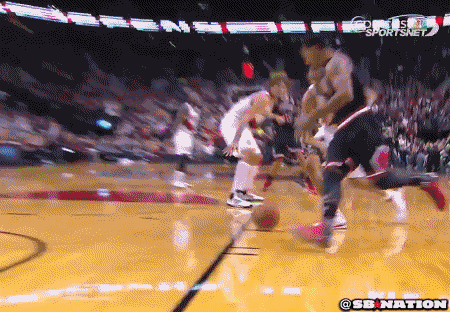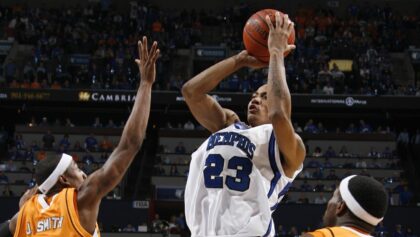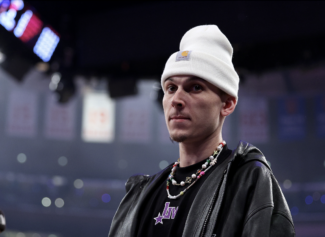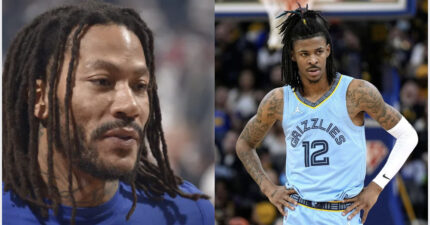Derrick Rose is the cynosure of blue-collared Chicago and Adidas’ most well-compensated pitch man. The only thing bigger than their 25-year-old point guard is the Sears/Willis Tower. However, hoisting the city of Chicago onto his shoulders hasn’t been good for his joints. When Rose collapsed clutching his left knee on April 29, 2012 against the Philadelphia 76ers, the city’s dreams of avenging their previous season’s Eastern Conference championship elimination by Miami died.
Nobody suspected he’d miss all of the next season and postseason. Instead, Rose was criticized for not taking the court months after he’d been medically cleared.
On Friday night, when Rose's knee gave out he didn’t writhe in pain on the floor. Instead, he simply limped off to the sideline. On Saturday, Rose was diagnosed with a torn medial meniscus in his right knee. The injury is similar to the meniscus tear suffered by Russell Westbrook after his collision with Patrick Beverley in April, but Rose has a history with injuries and unlike Westbrook’s meniscus tear, Rose’s tear is his second major non-contact injury. The worst-case scenario is that this isn't a blip on the radar.

Structurally unsound knees are often associated with giants in the front court, not lithe guards. We’ve seen degenerative knees derail Andrew Bynum, Amar’e Stoudemire and Greg Oden’s All-Star careers. Rose's recurring injuries are just as unsettling.
Reattaching the meniscus is the route taken by younger players, but carries with it a longer recovery period that could push his return into the postseason. Clipping the meniscus, is more detrimental to Rose's long-term health, but would have him back in the lineup before the All-Star break. However, Rose is so dependent on his athleticism that the possibility of his eggshell knees being damaged puts the core roster in danger of getting torched like Andre Rison's house. Clipping Rose's meniscus would eventually result in wear and tear of the joints in his knees, also known as osteoarthritis and shorten the prime of his career. The scary part about Rose's predicament is that surgeons won't know whether to clip it or repair it until they peel back the flesh.
Rose’s explosive first step, jaunts to the rim, body control and vision on the floor have allowed him to dance and float through the lane like it was a Soul Train line and made the Bulls perennial threats in the East.
Besides, Rose and Luol Deng are distrustful of the Bulls doctors and team physician Brian Cole after they severely underestimated the severity of Deng’s knee injury, confused Omer Asik’s broken leg with a day-to-day injury that sidelined him for seven months and botched Deng’s spinal tap during the first round of this year’s NBA playoffs.
That it occurred against the Portland Trailblazers is a cruel irony as it appears Rose could be headed down a Walton-like descent. The precursor to Rose’s ACL tear included four separate injuries during the regular season. Last week, Rose was nursing a hamstring injury. If this were a Scrabble board, the words degenerative would come to mind.
Rose’s second major knee injury triggers reflective thoughts about the City of Roses’ own dinged up star players. The glow of Rose’s star eclipses Greg Oden, Brandon Roy or Sam Bowie’s shine.
ACL scare 2013 is over, but the parallels to Bill Walton’s civil war with his own body and the Trailblazers trudging on without their MVP center aren’t far off. Rose’s rapid descent from elite player to well-paid assistant coach is unique, but not unheard of.
Before he was renowned as an eccentric broadcaster with an affinity for quoting 18th century authors and comparing Boris Diaw’s excellence to Beethoven’s Symphony No. 3 in E Flat, Walton was the Ninth Wounded Wonder of the Basketball World.
Portland’s window to creating an NBA dynasty in the pre-Bird and Magic days of the NBA was slammed shut because of Walton’s chronic foot injuries. Fortunately, Walton was able to win his first title in his final season of full playoff health before he began taking friendly fire from his own body. In 1978, he won his first MVP award despite suffering a broken foot, aggravated it in the playoffs and never played for the Trailblazers again.
Walton missed the entire 78-79 season, demanded a trade, sued the team doctor for medical malpractice and played 47 games with the San Diego Clippers over the next four seasons.
In the present day, focus now shifts to the Bulls’ strategy. What do they do with a ripe roster they composed to contend for a championship this season? Luol Deng is a free agent next season, and Carlos Boozer will be a 33-year-old expiring contract in 2014.
It doesn’t have to be all bad. The 2012-13 Chicago Bulls were one of the worst teams of all-time when it came to tanking. The 2013-14 Bulls were re-structured to fit around Rose at point guard, but are 6-5 in a season that leads to arguably the best collection of draft talent in a decade. Next season, Spanish sensation Nikola Mirotic will finally make his way to the States.
The defending Midwest Champion Spurs flipped David Robinson’s broken foot into a lotto ticket for Tim Duncan. If the Bulls can’t lure top-shelf free agent talent to the United Center, perhaps they should groom it there.



